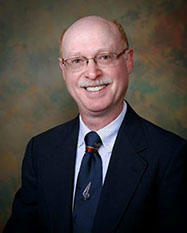It is very difficult to become a medical doctor. First, you have to go to college and take the necessary prerequisites. These prerequisites include chemistry, physics, organic chemistry, and English. Many medical schools, but not all, require calculus; none of these are “easy A’s”. It is no longer necessary to get an undergraduate degree but most applicants to medical school have graduated. There are programs which allow matriculation into medical school after two years of undergraduate training; these students are usually accepted into an accelerated program right out of high school. Some medical schools will take exceptional students after three years of undergraduate school.
When applying for medical school, most applicants take the Medical College Admission Test (MCAT) which is not easy. It helps determine who will be successful navigating the difficult medical school curriculum. Only about a third of the applicants get into an accredited American medical school.
Medical school itself is also difficult. The first two years are devoted to the basic sciences such as anatomy, physiology, biochemistry, histology, neurosciences, cellular biology, pathology, pathophysiology, pharmacology, medical statistics, genetics, embryology, and some form of Community Medicine. The books for these courses are thick and heavy and a superficial learning will not work. Most of these courses have associated laboratory time which are scheduled but may require extra work at night and during weekends. I spent many nights and weekends with my cadaver and my microscope and was fortunate to pass.
Didactic learning continues during the clinical years and the books associated with the clinical rotations are also massive. Not only are the students taking care of actual patients, they must read and study about the various disease processes. This self-study takes up most of the student’s free time both in the hospital and at home. The point I am trying to make is that the amount of material that must be learned is tremendous and it is increasing every day.
The growth of medical knowledge has been exponential during the time frame of my career. It has been estimated that, today, medical knowledge doubles about every 3.5 years (Peter Densen, MD, “Challenges and Opportunities Facing Medical Education,” Tran Am Clin Climatol Assoc. 2011, 122: 48-58). It has been estimated that by 2020, medical knowledge will double every 73 days (Peter Densen, MD). With the vast amount of medical knowledge necessary to provide competent care, it is not surprising that physicians are looking for new ways to access up to date knowledge. The wise physician knows that he can no longer rely on what he learned in medical school and during his residency as the journals are replete with new information relating to physiology, pathophysiology, pharmacology, genomics, and clinical care pathways.
Computers are now being used as are Electronic Health Records so that templates can be made to advise the physician taking care of a particular patient as to what tests to order, consults to obtain and treatment options. As an aside, IBM has Watson which is being used in a medical setting to provide this knowledge and I am sure there are other companies building their own computers to do this work. I used to think that Watson was not named appropriately since it was Sherlock Holmes who was the really smart one. It took an upper level executive at IBM to inform me that Watson was named after the founder of IBM, not the literary character.
It has become commonplace to see young physicians in training access their hand held devices during rounds so as to have current and credible information relating to their patient’s disease process. This allows them to better answer the questions presented by the attending physician and, in fact, it helps them educate the attendings as to the latest information. I am not so technologically adept and I look forward to this new information coming from the residents as it helps me keep up to date myself.
Whether under the Affordable Care Act or under whichever plan the Republicans are considering to replace it, a shift of care must occur to high value, non-hospital, preventative and maintenance care. The goal is to keep the patient out of the hospital where the costs are highest.
As the care of patients shifts away from the hospital setting and more into out-patient clinics and even into the patient’s home, non-MDs become more important in the provision of care. In fact, as the patients and their families take on more of the care themselves, then the “provider” of care takes on a very different meaning from when we relied mostly on physicians. Not surprisingly, the knowledge base of these non-MD providers varies widely. It has been estimated that Americans visit their physician on the average of four times a year. Assuming the visit lasts about 15 minutes, then the total time of direct medical education of the patient is only about an hour a year. Can we really expect the patient to keep up with the latest advances in medical care by doing his own research and learning? I doubt it.
If the patient is going to take on a major role of providing his own health care, it is not surprising that there will be large gaps of medical knowledge among the general population. If it is difficult for physicians to keep up to date, how can we expect nurses, physician assistants, pharmacists, pharmacologists, or patients to do any better?
Through the years, I have ceased to be amazed by how many health care providers fail to keep up with the advances in medical care; they do not go to meetings for continuing education and it is obvious they are not keeping up with the journals. I am also not surprised by how poorly some of these providers take care of their patients. If time is not spent on meaningful study to keep up with the new developments in our field, then there is no way to know how best to take care of the patients.
For someone entering the health care field today, even more so than when I graduated medical school, he must have dedicated time for study; that is the only way to keep up. Although hand held electrical devices—often referred to as “peripheral brains”—will be helpful, they will not be enough. With looming shortages projected for surgeons and some other medical specialties, more clinical time will need to be spent in taking care of the patient load. This will decrease time spent in continuing education, time spent for relaxation, and time spent with families. This does not look good for health care providers. Of more importance, it does not look good for the patients.
 by Darryl S. Weiman, M.D., J.D.
by Darryl S. Weiman, M.D., J.D.
Professor, Cardiothoracic Surgery, University of Tennessee Health Science Center and Chief of Surgery, VAMC Memphis, TN
